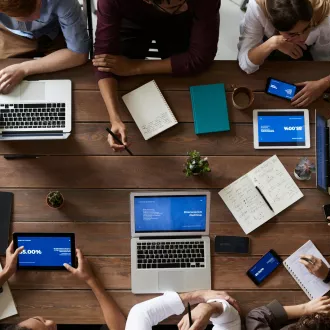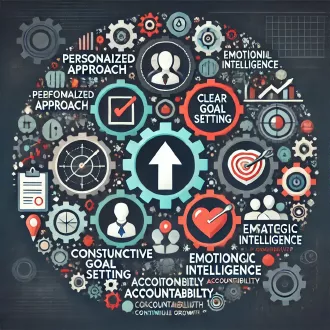Transcription Practice as a tool for skills development
Whether learning to play a musical instrument or perfecting sports skills, the path to mastery involves constant repetition of actions, especially when dealing with new or challenging tasks. In the context of leadership and teamwork coaching, it is recognized that perfection is achieved through constant and deliberate practice.
Skill development does not happen overnight, but requires a constant commitment to practice. This involves overcoming the natural tendency to label people and instead focusing on describing the specific behaviors one seeks to improve.
The skill development process involves identifying both the technical components and the desired outcomes. For example, in team leadership, a crucial skill is leading effective problem-solving brainstorming. By breaking this skill down into specific behaviors, the precise actions that lead to successful brainstorming can be identified.
This technique can be used, for example, to define a problem, to identify its causes, and to find solutions. The behavior of a good facilitator is as follows:
- Verify that there is always a consensus among the participants at each step.
- Acknowledge all participants and motivate them to participate.
- Listen and take note of all ideas without judging them.
- Take care that the rest of the team also does not judge others and responds to those ideas in a constructive way.
This is a skill, a set of behaviors that the leader can work on until they master the setup but feedback is important at each step.Practice involves not only the repetition of behaviors, but also the process of acquisition and automation. As behaviors are practiced repeatedly, they become more fluid and automatic, allowing for effortless performance.
The process of behavior change is essential to skill development. Each behavior identified and practiced is part of a chain that leads to mastery of the desired skill.
The flow and automation of behaviors comes with continuous, conscious practice. As individuals practice and chain behaviors, a synergy is created within the team, allowing everyone to work together intuitively and effectively.Constant practice not only leads to individual skill development, but also contributes to cultural change and strengthening of organizational culture.
Key aspects of how practice becomes an effective tool for development are explored here:
- Realistic application: practice should be as realistic as possible, simulating real situations that team members face. This helps develop skills that are applicable in the work environment. Practice allows effective integration between theoretical learning and practical action.
- Repetition and refinement: Repetition is essential for learning. Through repeated practice, team members can hone their skills and improve their performance over time. Practice is not limited to a single event, but is integrated into the routine.
- Ongoing feedback: Practice provides opportunities to receive feedback and feedback on performance. This information is valuable for identifying areas for improvement and adjusting approaches.
- Learning through mistakes: practice allows team members to make mistakes in a controlled environment. These mistakes become opportunities for learning and growth.
- Transfer of learning: practice facilitates the transfer of learning from the training environment to the actual workplace. Team members can apply what they have practiced effectively.
- Development of new habits: constant practice can help establish new habits and behaviors. As team members practice, these behaviors become natural.
- Self-confidence and self-efficacy: through practice, team members can build self-confidence and self-efficacy by seeing tangible improvements in their performance.
- Experimentation and creativity: practice provides the opportunity to experiment and try different approaches and solutions. This fosters creativity and innovation.
develop skills




